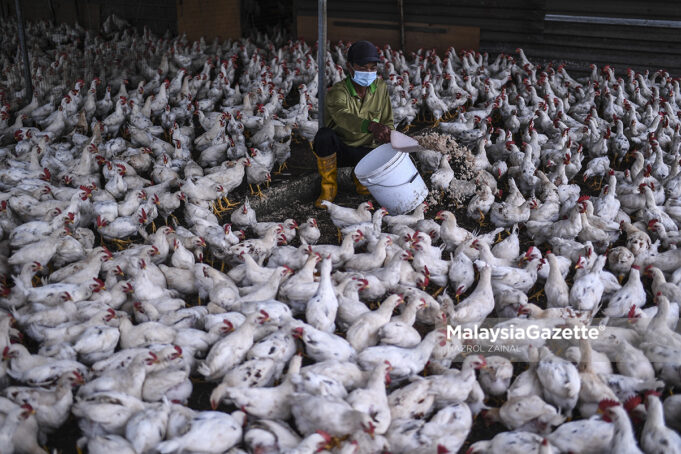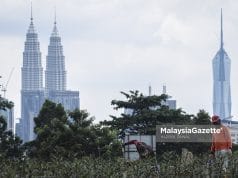KUALA LUMPUR – The lamentation on the chicken price hike is unavoidable as the price of raw ingredients to produce chicken feed has increased between 50 to 70 percent.
The price increment has been going on since January last year, said Tan Chee Hee, Federation of Livestock Farmers’ Associations of Malaysia (FLFAM) President.
For example, in January 2020, the price of corn for each tonne metric was RM950. It increased by 41.3% in March this year to RM1,300.
The price of soy also increased close to 58% from RM1,650 to RM2,600 within the same period.
With the price increment of raw materials, it is tough for the farmers to maintain the price of chicken as it involves cashflow.
“The increment of 50 to 70 percent is a huge leap, it is definitely tough for the farmers to continue keeping the price low.
“The figures are no joking matter as the consumers can check the global price for corn and soy that are used to produce chicken feed.
“When this increment happens, the farmers need to increase their capital, perhaps, in the past, they need RM1 million, but with the increment, their cost has increased to RM1.5 million,” he told MalaysiaGazette
According to him, it is rare for the farmers to try to rake profit in the chicken business as it is very risky, especially in market demands.
Chee Hee further explained that if farmers increase prices as they wish, the wholesaler and traders will receive the impact as the demands would drop drastically.
Therefore, it is difficult to manipulate the prices of chicken in the chicken business as alleged by certain quarters.
Meanwhile, he also rejected the allegation that there is a lack of chicken supplies in the market. On the contrary, the there is enough of chicken and the sizes of chicken could also be smaller than before, when the demand is there for bigger chickens.
This problem happened as the local farming industry is facing a serious shortage of manpower.
He said, the industry produces two million chickens in a day, however, since the implementation of the Movement Control Order, the amount has reduced to 1.6 million.
The breeding cycle is between 30 and 35 days.
“With the shortage of manpower and reduced productivity, the production of chicken also decreases,” he explained.
According to Chee Hee, the industry is facing the difficulty in getting manpower among the locals although they are being offered higher wages compared to foreign workers.
The locals prefer to work in factories compared to farms although we offer up to RM1,800 of monthly salary.
“It is very difficult. At the moment, only 10% are willing to work in the farm. Due to this, the labour-intensive farming industry needs to depend on foreign workers,” he said. -MalaysiaGazette
Read More:
KDPNHEP will not hesitate to implement price control for chicken

















